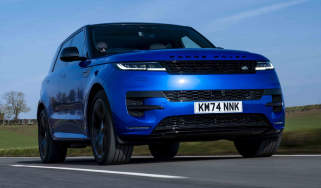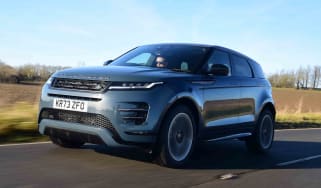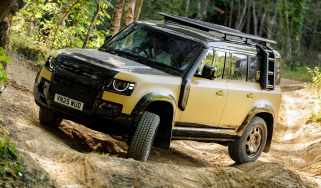Land Rover
Jaguar Land Rover breaks silence on design boss Gerry McGovern exit rumours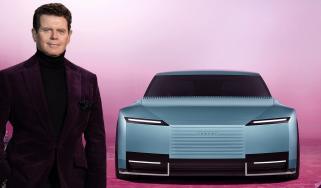

Jaguar Land Rover breaks silence on design boss Gerry McGovern exit rumours
McGovern’s sudden departure came one year on from the huge backlash at Jaguar going ‘woke’,
Best large SUVs to buy 2025

Best large SUVs to buy 2025
Large SUVs are big on comfort, practicality and versatility. Here’s our pick of the best on sale now
Used Range Rover Sport (Mk2, 2013-2022) review and buyer's guide

Used Range Rover Sport (Mk2, 2013-2022) review and buyer's guide
A full used buyer’s guide on the Range Rover Sport, covering the second-generation car that was on sale between 2013 and 2022
Best used large SUVs and 4x4s to buy 2025

Best used large SUVs and 4x4s to buy 2025
The best used large SUVs and 4x4s offer space, practicality, performance and low running costs
Best used luxury cars to buy 2025

Best used luxury cars to buy 2025
An ultra-comfortable ride and a premium driving experience can be yours with the best used luxury cars
Best 7-seater cars to buy 2025/2026

Best 7-seater cars to buy 2025/2026
We pick the best seven-seater cars for family life across a wide range of price points
Future of Jaguar, kill or cure? 5 huge challenges new CEO must meet to revive JLR

Future of Jaguar, kill or cure? 5 huge challenges new CEO must meet to revive JLR
New CEO to take the reins following the cyberattack which caused a £485m loss and could wipe out whole-year profits
A Land Rover Defender pick-up truck with a 419bhp V8! What’s not to love?

A Land Rover Defender pick-up truck with a 419bhp V8! What’s not to love?
Modification specialists Urban Automotive and Heritage Customs have created two visions of a new-age Defender pick-up
The scariest cars we've ever driven

The scariest cars we've ever driven
The Auto Express team have cast their minds back to the scariest cars they’ve had to endure
Jaguar Land Rover cyber attack was costliest in British history, and the pain isn’t over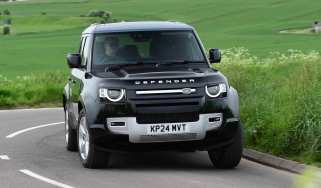

Jaguar Land Rover cyber attack was costliest in British history, and the pain isn’t over
Cyber attack cost the economy anywhere between £1.6 and £2.1billion
New Land Rover Defender Sport: electric Freelander successor has the BMW iX3 in its crosshairs

New Land Rover Defender Sport: electric Freelander successor has the BMW iX3 in its crosshairs
The new Land Rover Defender Sport is set to sit below the existing Defender in the Land Rover range, with our exclusive images previewing how it could…
Best and worst car brands for depreciation: Which car manufacturer holds value best?

Best and worst car brands for depreciation: Which car manufacturer holds value best?
What brands hold onto their value the best, and which are the worst? With data from experts CDL, we reveal all.
Top 10 best 8-seater cars to buy

Top 10 best 8-seater cars to buy
Here are our picks for the best cars with room to seat up to eight people
Range Rover L322 by Velvet Motorworks is an Estonian revamp of the British SUV

Range Rover L322 by Velvet Motorworks is an Estonian revamp of the British SUV
Estonian company Velvet Motorworks is giving the third-generation Range Rover a new lease on life with bespoke restomods
Long-term test: Range Rover Sport P550e Autobiography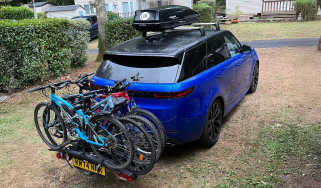

Long-term test: Range Rover Sport P550e Autobiography
Final report: It’s a grand finale for our PHEV as we take it to the south of France
Best new cars coming soon: all the big new car launches due in 2025, 2026 and beyond

Best new cars coming soon: all the big new car launches due in 2025, 2026 and beyond
Here are the most important new cars from Audi, BMW, Dacia, Ferrari, Ford, Skoda and more that you need to know about
Three-car garage: used Range Rover, BMW 8 Series Gran Coupé and Jaguar XK for £100k

Three-car garage: used Range Rover, BMW 8 Series Gran Coupé and Jaguar XK for £100k
For the price of a new Mercedes S-Class, you can have a luxurious SUV, an elegant saloon and a timeless sports car
New ‘baby’ Range Rover electric SUV: design, technology and full details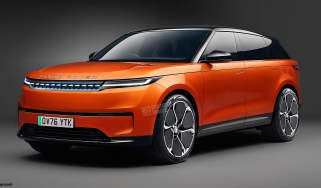

New ‘baby’ Range Rover electric SUV: design, technology and full details
JLR is getting ready to unveil a mid-size electric Range Rover to end its four-year new model drought, and our exclusive images preview how it could l…
Best luxury cars to buy 2025

Best luxury cars to buy 2025
Indulge yourself with our list of the best luxury cars on sale today
No EV for the PM: Keir Starmer stuck with V8 Range Rovers as JLR can’t bomb-proof electric model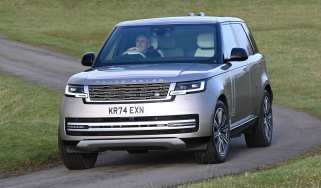

No EV for the PM: Keir Starmer stuck with V8 Range Rovers as JLR can’t bomb-proof electric model
An electric Range Rover would not offer sufficient blast protection, says JLR
Land Rover Defender Churchill Edition is a tribute to Britain’s wartime PM

Land Rover Defender Churchill Edition is a tribute to Britain’s wartime PM
Limited-run Classic Defender gets a stonking great 400bhp V8, but nowhere to store your cigars
New Range Rover Sport SV Carbon flagship revealed with eye-watering price tag

New Range Rover Sport SV Carbon flagship revealed with eye-watering price tag
New top-rung of the Range Rover SV ladder adds lots of carbon-fibre components and a hefty premium
Best luxury SUVs 2025

Best luxury SUVs 2025
Luxury SUVs combine the sophistication of a luxury car with the sheer practicality of an SUV. Here’s our pick of the current crop
New electric cars coming soon: the fresh EVs of 2025 and beyond

New electric cars coming soon: the fresh EVs of 2025 and beyond
The EV market is growing faster than ever, and these are the incoming cars to keep an eye on
New Range Rover Electric 2025 review: could it be the ultimate EV?

New Range Rover Electric 2025 review: could it be the ultimate EV?
We drive the new luxury Range Rover Electric off-road and get taken for a passenger ride on ice
Used Car Hunter: big family SUVs for £20,000

Used Car Hunter: big family SUVs for £20,000
Our Car Hunter has a budget of £20,000 to buy a spacious SUV that’s fit for a family
Best small vans 2025

Best small vans 2025
Small vans are practical, affordable and cheap to run. This is our top 10 rundown of the best low-cost load-luggers
Range Rover's secret mid-size EV: Inside its £500m factory

Range Rover's secret mid-size EV: Inside its £500m factory
We take an exclusive look inside JLR’s revamped Liverpool site as the brand gears up for EV production
500 job losses at Jaguar Land Rover “disappointing”, says Government

500 job losses at Jaguar Land Rover “disappointing”, says Government
A voluntary redundancy scheme will see 500 managerial positions cut at Jaguar Land Rover
Land Rover Freelander to return in 2026, but not to the UK

Land Rover Freelander to return in 2026, but not to the UK
The Freelander name will be used for new range of electric cars, initially just sold in China but possibly coming here as well down the road
